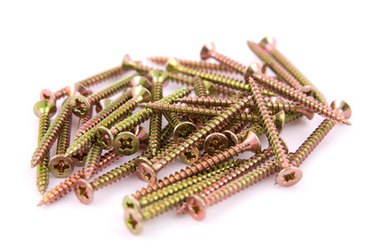
Drywall is an inexpensive, relatively easy-to-install wall covering used in most modern homes. It works well for home additions or to replace old plaster in a remodel. Drywalling a ceiling is more complex than hanging a wall, however. Ceiling drywall requires certain fastener spacing, depending on its thickness, and may need special treatment.
Conventional Drywall
Video of the Day
Conventional drywall comes in 1/4, 3/8, 1/2 and 5/8 inch thicknesses. Thinner drywall is lighter, but also less rigid, and may sag if not well supported. Drywall in 1/4-inch thicknesses is rarely hung on either walls or ceilings and is usually used to drywall curves and other unusual areas. Hometime How-to recommends hanging 1/2-inch conventional drywall using nails every 7 inches or screws every 12 inches to prevent sagging. Some codes allow using screws every 16 inches on conventional drywall.
Video of the Day
Green Board
Green board, or water-resistant drywall, is used in kitchens, bathrooms and other areas where moisture could damage conventional drywall. This material is not completely waterproof and should never be allowed to get wet. It is slightly heavier than conventional drywall and more sensitive to the spacing of the studs behind it. Use 1/2-inch thick green board on ceilings with joists spaced 12 inches apart or fewer and 5/8-inch drywall on ceilings with joists up to 16 inches apart. Use a waterproof wall material over green board in moisture-prone areas.
Plaster Ceilings
Drywall is often used to repair holes in plaster ceilings or installed directly over the ceiling itself. This Old House recommends using 3/8-inch thick drywall to repair holes in 3/8-inch plaster. Take care to screw the drywall directly to the framing under the plaster, not to the lath that supports it. Install 1/2-inch drywall over the plaster and the thinner patch. This material works better than 3/8-inch drywall over old ceilings, which are often not quite level. Attach drywall installed over plaster ceilings to the joists under the plaster at intervals of 8 to 12 inches using 2-inch drywall screws. Never use shorter screws, which may not hold the drywall up properly.
Considerations
Choose drywall according to the size of the project and the amount of help you have available. Thinner ceiling drywall is easier to lift into place but tends to bow and sag more over time. Use thicker sheets over large spans when ceiling joists are widely spaced or in other areas where sagging is a concern.